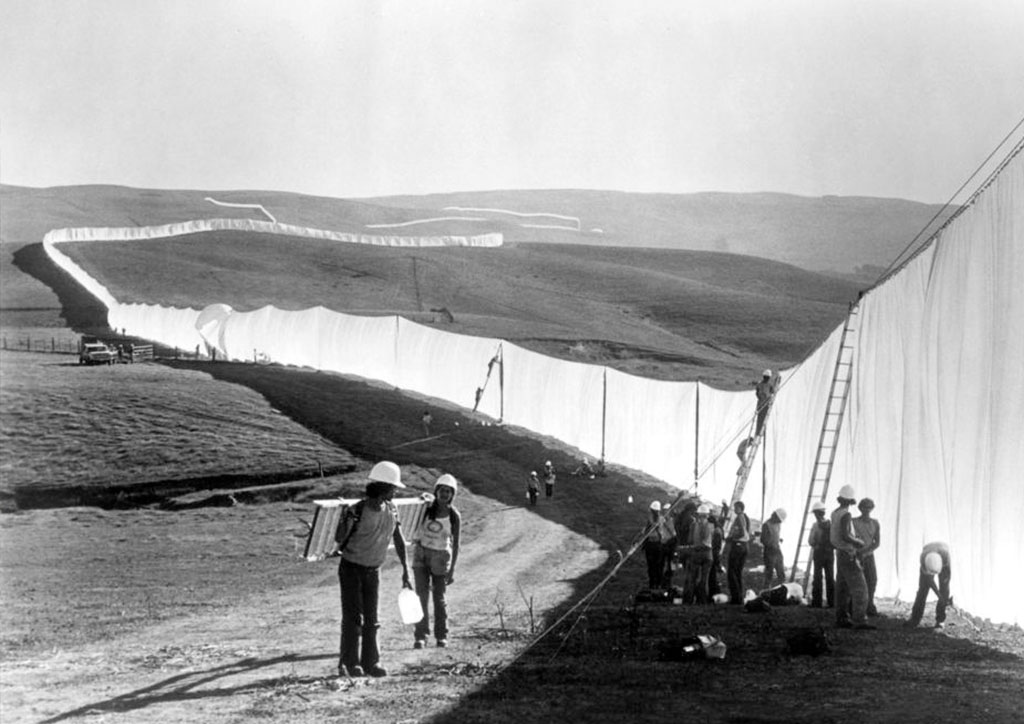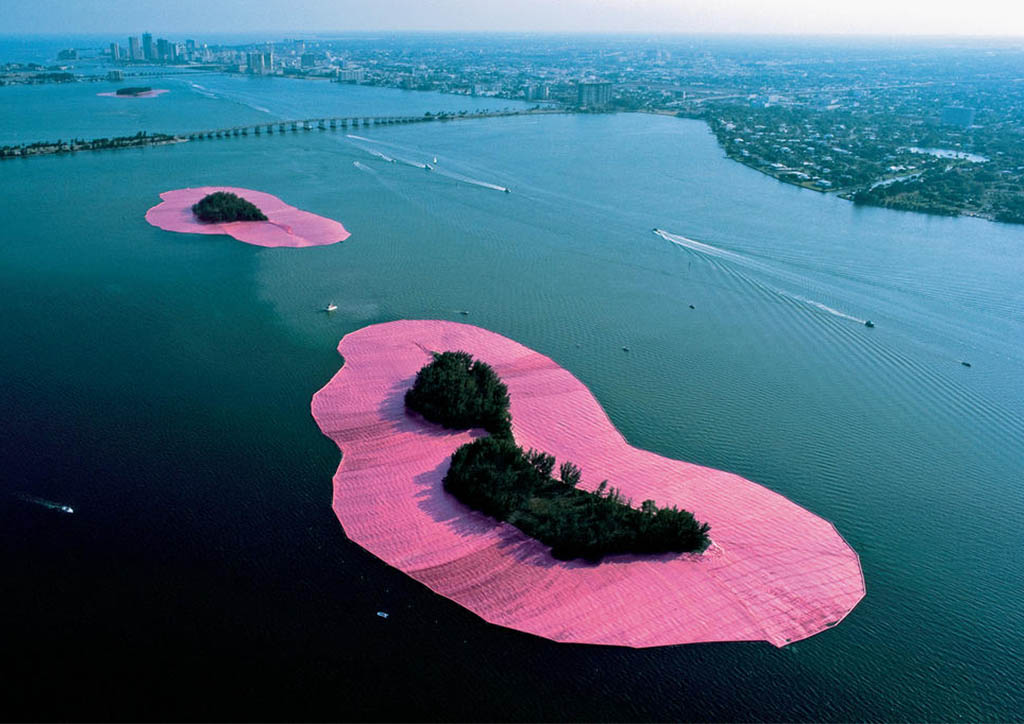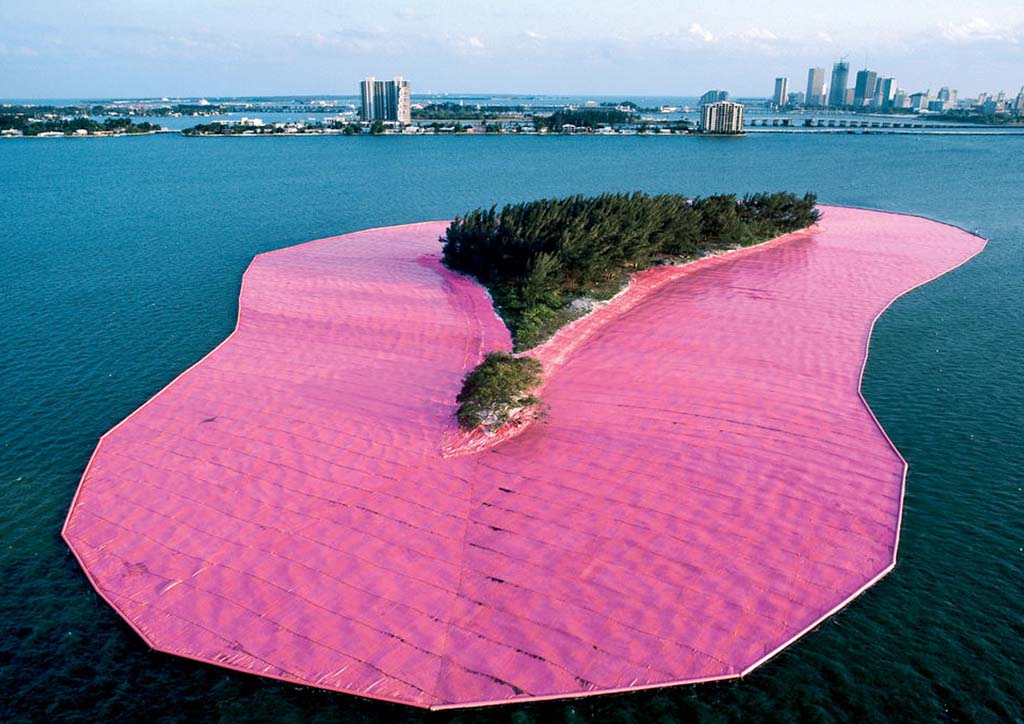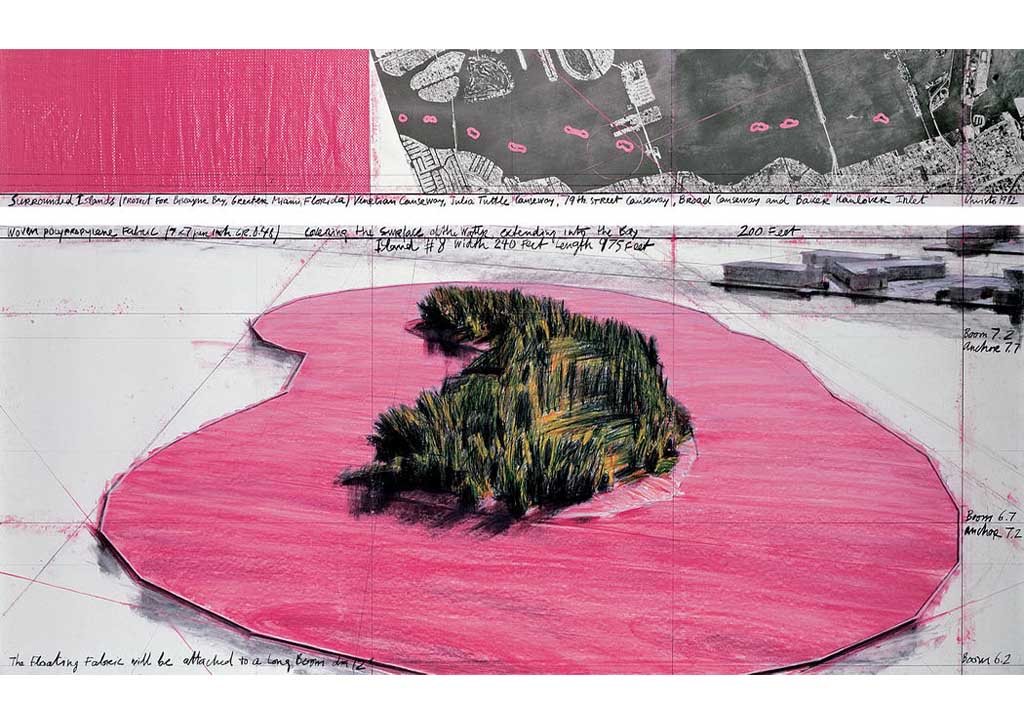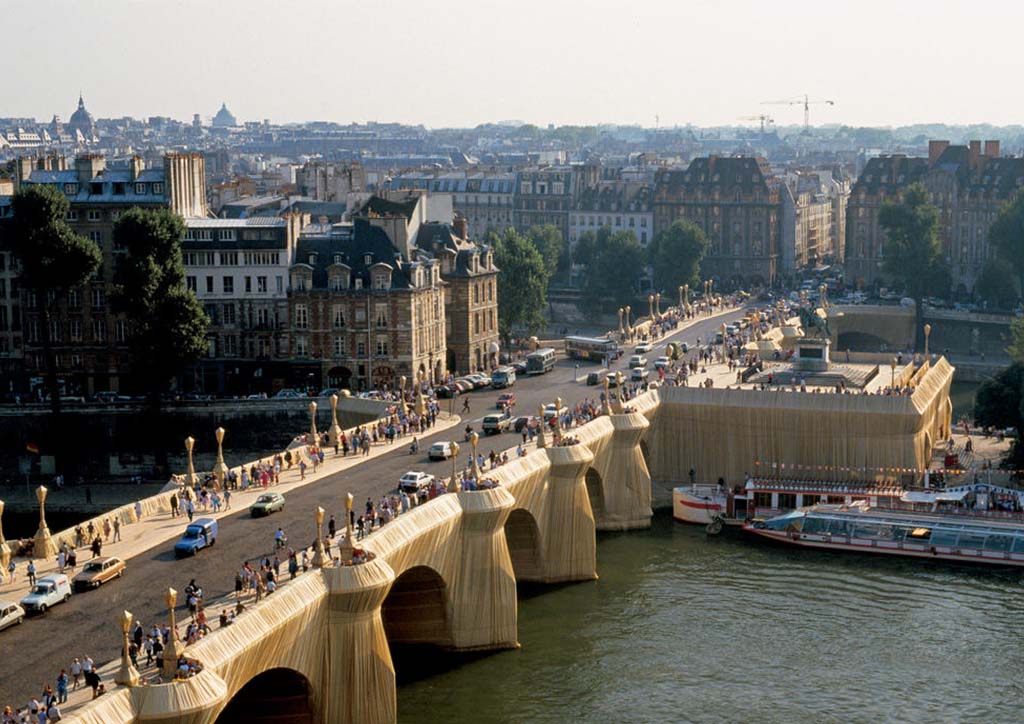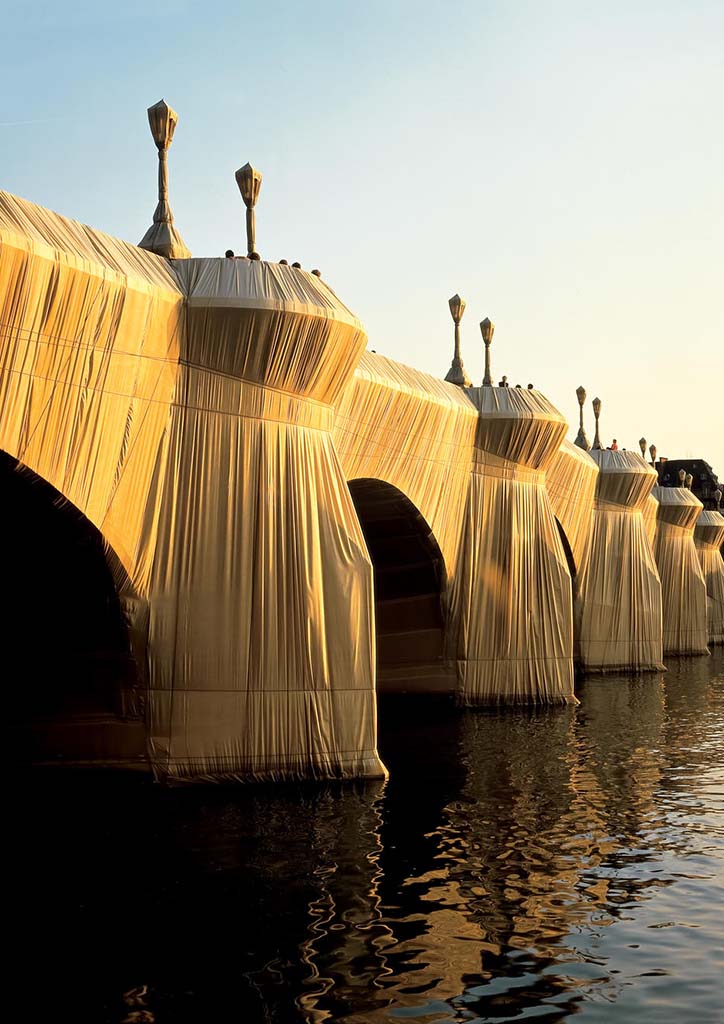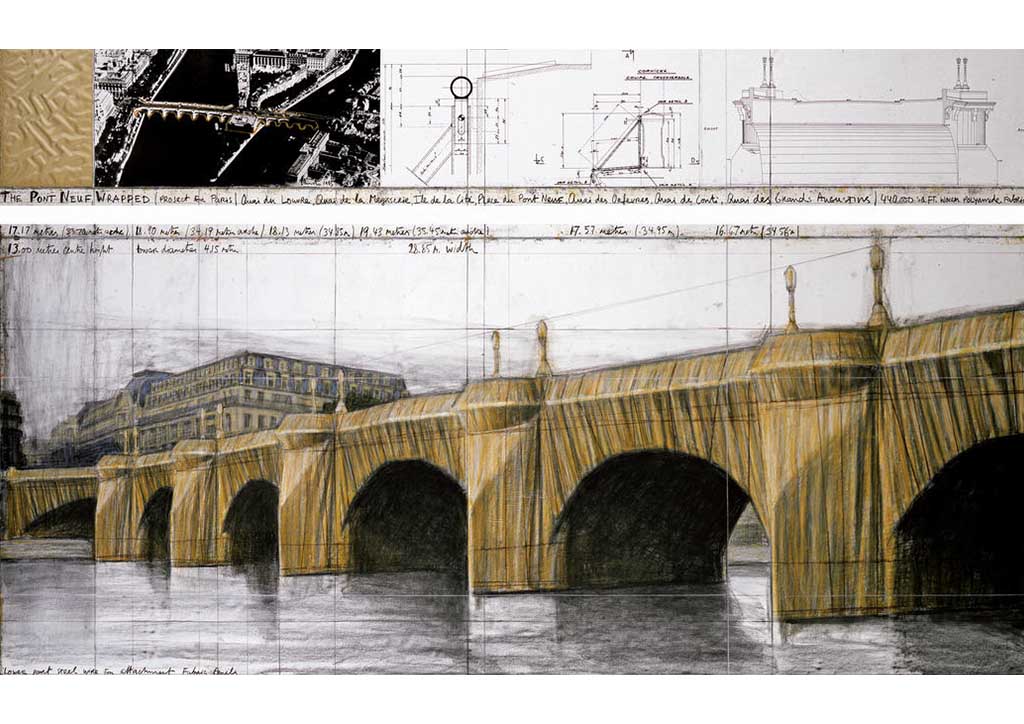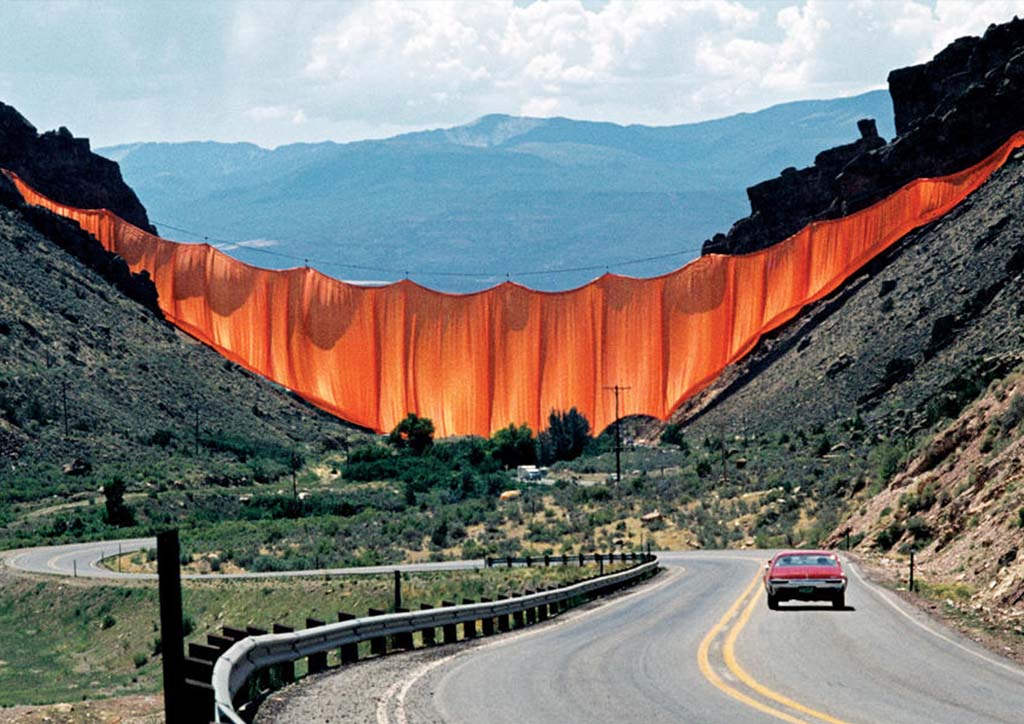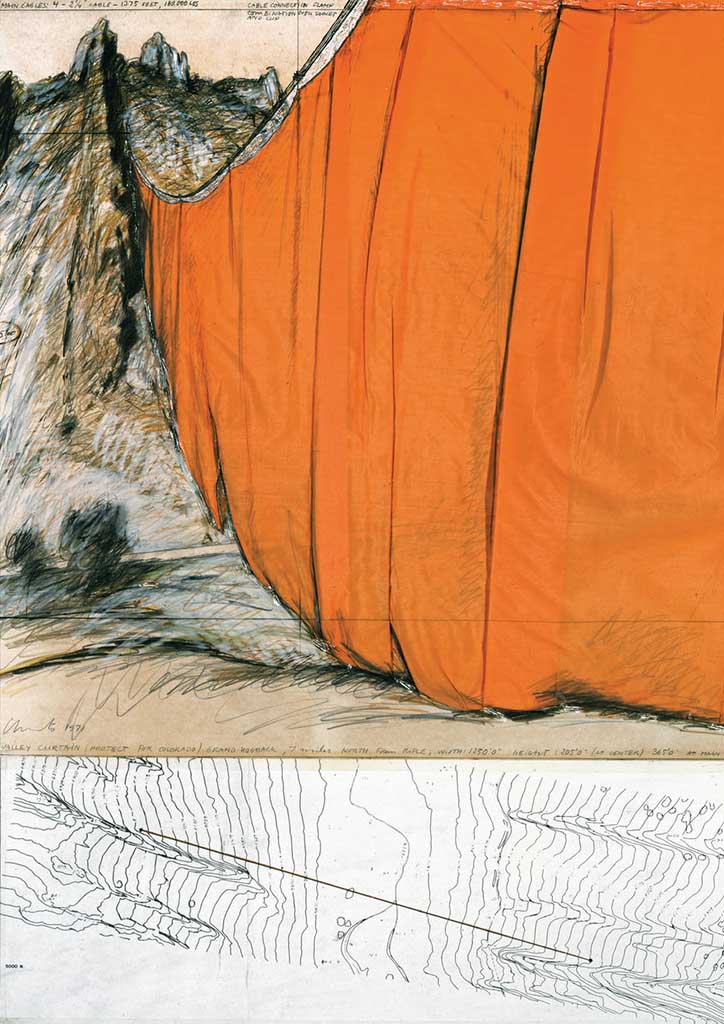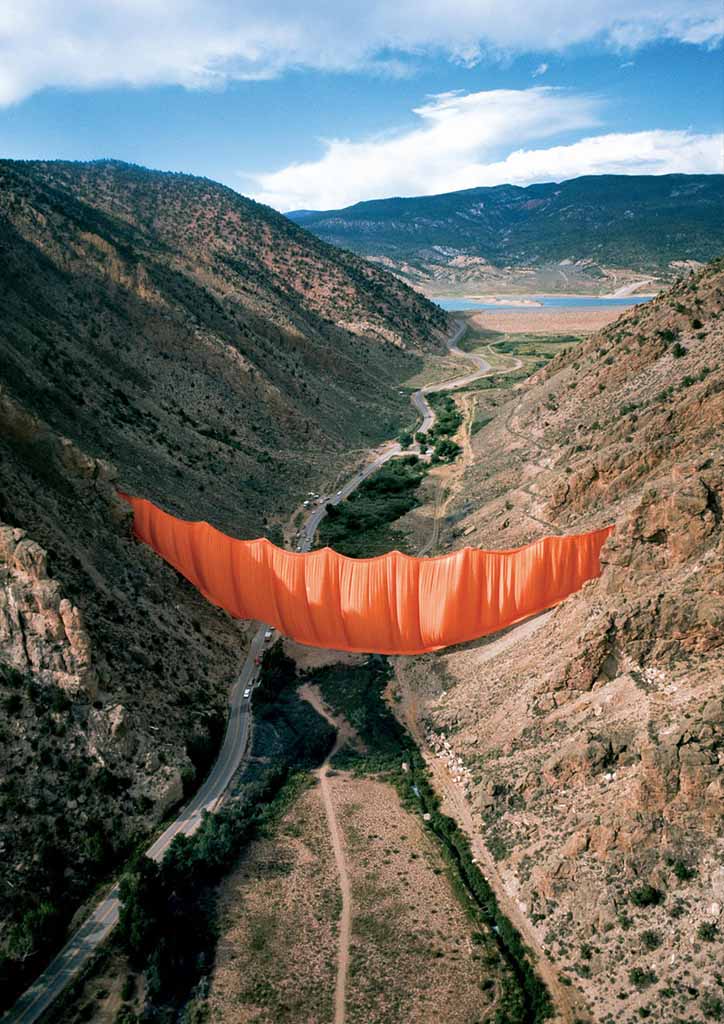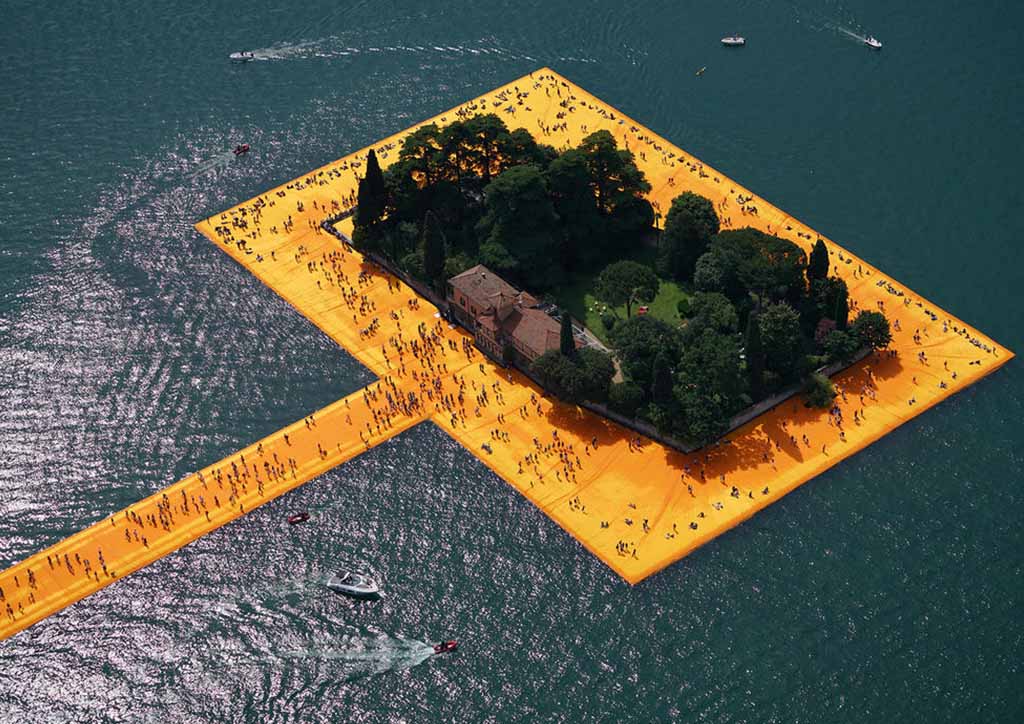
Wrap up: 5 extraordinary works of the late installation artist, Christo
Born on the same day in 1935, the artistic and romantic union of Christo Vladimirov Javacheff (June 13, 1935 – May 31, 2020) and Jeanne-Claude Denat de Guillebon (June 13, 1935 – November 18, 2009) led to the unveiling of a number of fleeting yet memorable large-scale installations. Their pieces are a marriage of art and architecture, using both natural landscapes and man-made structures as their canvas. With fabric as their main material, the self-funded duo established a legacy of creative freedom, taking on the world as their own gallery.
Here are 5 of Christo and Jeanne-Claude’s masterpieces, mirroring their concept of an alternative environment:
1 ┃Running Fence (Sonoma and Marin Counties, California,1976)
Stretching the span of US Highway 101, crossing 14 roads, and on the private properties of 59 ranchers is the 18-feet high and 24.5-kilometer long Running Fence that follows the rolling hills. Its 200,000 square meters of heavy woven white nylon fabric drop down to the Pacific Ocean at Bodega Bay, echoing a finish line. The installation was “hung from a steel cable strung between 2050 steel poles embedded 3 feet into the ground, using no concrete and braced laterally with guy wires and 14,000 earth anchors.”
Christo once said that “the work of art is a scream of freedom.” This remains true for most of his works, with Running Fence proving how art can transcend even beyond borders, leaving an indelible mark to all those who catch a glimpse of it as they passed by the 40 miles of public roads, and especially for the ranchers who received all its materials after 14 days of display.
2 ┃Surrounded Islands (Biscayne Bay, Greater Miami, Florida,1983)
Probably one of their most expressive projects, Christo and Jeanne-Claude’s Surrounded Islands is a manifestation of beauty in isolation. The venue of the project, Biscayne Bay, has been known to be isolated from direct marine influence at least over the last two centuries. Using 79 patterns divided into 6.5 million square feet of floating pink woven polypropylene fabric, the artists followed the outline of 11 islands.
The pink fabric began to blossom on May 4, 1983, about 3 years since its planning stage. Surrounded Islands was tended day and night by 120 monitors in inflatable boats and was made possible with a total workforce of 430. For 14 days, another Christo and Jeanne-Claude installation was successful in perceiving a new environment, with the public enjoying a splash of color in a once mundane scenery.
3 ┃The Pont Neuf Wrapped (Paris, France, 1985)
The Pont Neuf is the oldest standing bridge across the river Seine in Paris, France. It was constructed in 1578 and was believed to be designed by French architect Baptiste Androuet du Cerceau. After years of negotiation with then Mayor of Paris Jacques Chirac, Christo and Jeanne-Claude wrapped the Pont Neuf with woven polyamide fabric. The silky and golden sandstone colored fabric covered the entire bridge, including the sides and vaults of the twelve arches, sidewalks, street lamps, and the parapets down to the ground.
Located in the heart of Paris, the Pont Neuf established another identity through its 14-day wrapped display. “If some of our works are symphonies, then wrapped walkways was chamber music,” Christo once said. The Pont Neuf wrapped was definitely more than just chamber music—it was a combination of all the good melodies playing an arrangement.
4┃Valley Curtain (Rifle, Colorado, 1972)
Installed between Grand Junction and Glenwood Springs in the Grand Hogback Mountain Ranges of Colorado, The Valley Curtain is “suspended at a width of 1250 feet and a height curving from 365 feet at each end to 182 feet at the center.” Perfectly contoured into the mountain slopes, the installation provides a majestic scenery from the high roads, enhancing the natural landscape through the vibrant orange contrast.
28 hours after its completion, a strong wind forced the removal of the Valley Curtain. Although it only lasted for a day despite its almost 2 years of completion, the installation proved the wonder in the ephemeral, recalling Christo’s words: “I am an artist and I have to have courage. Do you know that I don’t have any artworks that exist? They all go away when they’re finished. Only the preparatory drawings and collages are left, giving my works an almost legendary character. I think it takes much greater courage to create things to be one than to create things that will remain.”
5┃The Floating Piers (Lake Iseo, Italy, 2016)
Christo formed a new conception of the Lake Iseo in Italy. Moving with the waves was 100,000 square meters of shimmering yellow fabric from Sulzano to Monte Isola and to the island of San Paolo, walked on and enjoyed by the public. The piers were the main frames, measuring 16 meters wide and approximately 35 centimeters high with sloping sides. First conceived by Christo and Jeanne-Claude in 1970, “the Floating Piers was Christo’s first large-scale project since Christo and Jeanne-Claude realized The Gates in 2005, and since Jeanne-Claude passed away in 2009.”
Symbolical to life, The Floating Piers is a pleasure of various directions, only to result in a peaceful ending. After 16 days of exhibition, components were industrially recycled and the entire framework was removed. It is an embodiment of Christo and Jeanne-Claude’s art: ephemeral but never forgotten.
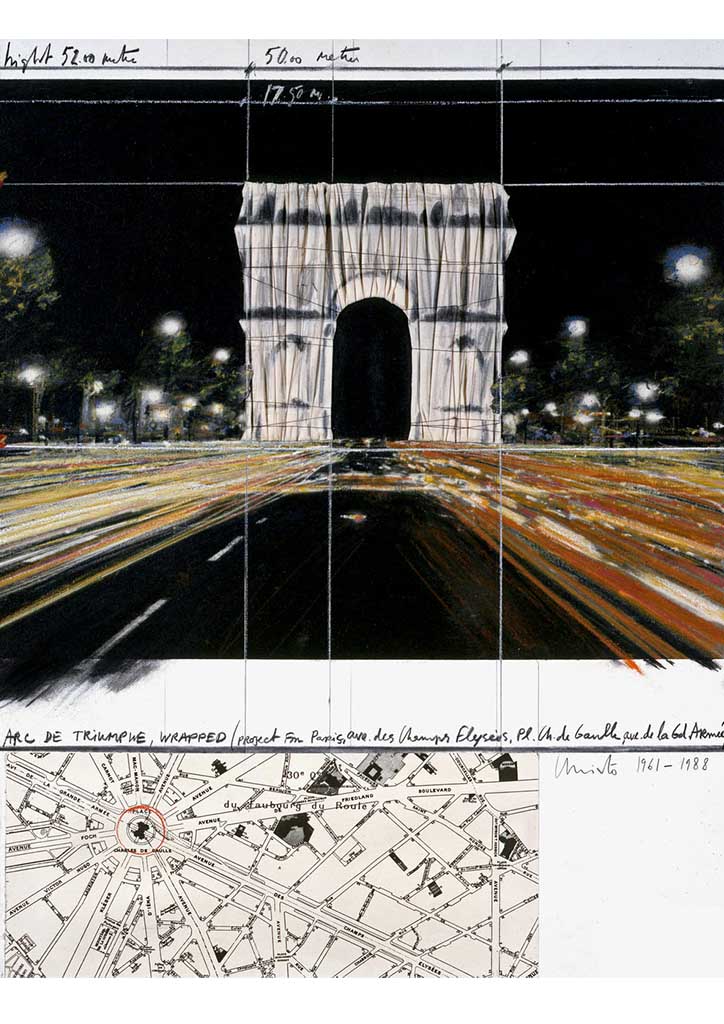
“People think our work is monumental because it’s art, but human beings do much bigger things: they build giant airports, highways for thousands of miles, much, much bigger than we create.” – Christo and Jeanne-Claude
Information obtained from Christo + Jeanne-Claude
READ MORE: 8 Notable works by 2020 Pritzker Prize Laureate Grafton Architects

